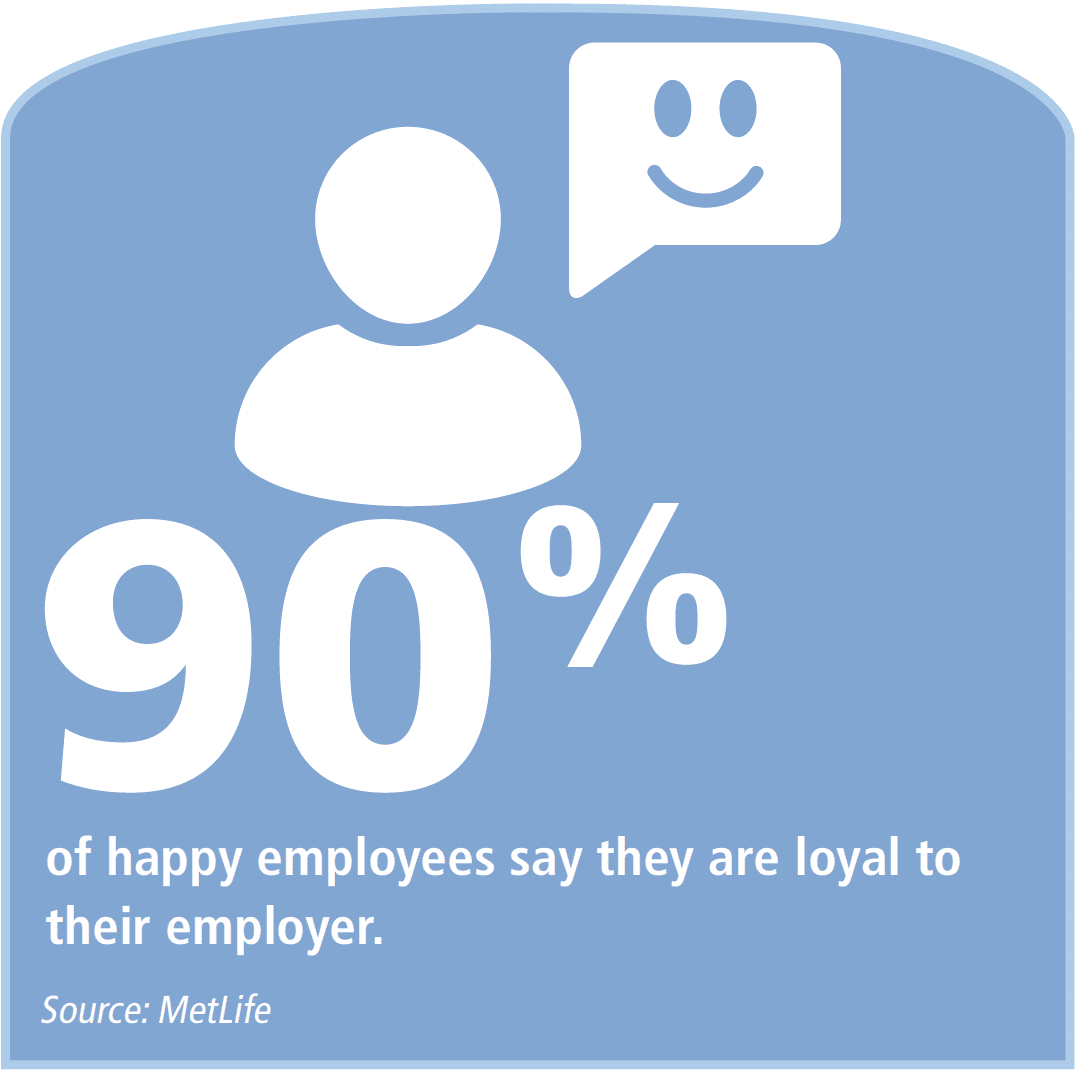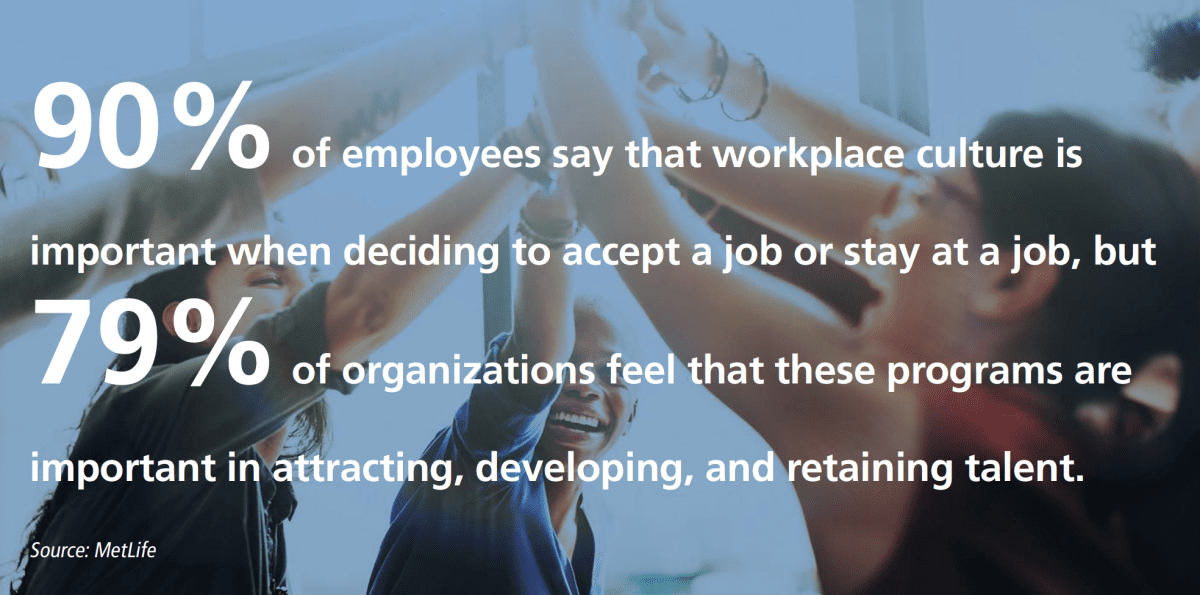New research reveals the drivers and deterrents of employee productivity -and how employee benefits can help both.
By Susan Podlogar
Employee performance has been a main focus of organizations as the key ingredient for success. However, this is no longer enough. MetLife’s 17th annual U.S. Employee Benefit Trends Study (EBTS) found that employees across all generations are looking for support from employers both in and out of the workplace. As a result, if an organization wants to hit its potential, its employees must also be set up to hit their potential -at work and at home.
These shifting expectations have caused employers to rethink the experiences they are creating for all employees inside the office as well as how they are fostering success for workers at home. With a multidimensional, multi-generational workforce, there is no single answer. Employees are looking for differentiated experiences, and employers can no longer lean on the old ways of doing things. It is time for to reinvest, reimagine, and reinvigorate HR practices to maximize the impact of the workforce. But where to start?
Employers who demonstrate that they care holistically about their employees find employees are driven to show up and do their best work, experience less burnout, and have more confidence in their overall ability to succeed. The EBTS found that 90 percent of happy employees say they are loyal to their employer.
In order to create an environment in which employees can reach their full potential, employers need to understand the key drivers of productivity and happiness at work. The study found the top five drivers include:
- Employees’ trust in their company’s leadership.
- Employers’ commitment to employees and their success.
- A culture where employees are encouraged to share ideas and individual opinions.
- Co-workers that feel like family or friends.
- Benefits customized to help meet employees’ needs.
The most significant driver of maximizing potential at work is trust -primarily in an organization’s leadership and its commitment to employees’ success. By creating a trusting, caring culture that delivers on these drivers, employers can cultivate an environment in which their workforce thrives. However, the EBTS shows that employers may not recognize the important role that workplace culture can play: 90 percent of employees say that workplace culture is important when deciding to accept a job or stay at a job, but a gap exists. Only 79 percent of organizations feel that these programs are important in attracting, developing, and retaining talent.
To address the importance employees place on workplace culture, employers can focus on making transparency, inclusion, and investments in employee success core elements of their organization’s DNA. At the same time, it’s not enough to embed these elements. Employers can do more to successfully communicate their commitment to employees.

- personal finances;
- work itself;
- personal and family health; and
- meeting personal commitments.
What can help? The EBTS found that half of all employees feel that better benefits are the key to addressing increasing stressors they face on a daily basis. A comprehensive benefits program can help employees address their main concerns, especially those around personal finances, retirement, and their family’s health, and give them the support they need to achieve both their personal and work-related goals.
Offering a mix of benefits that meet the varied needs of a diverse workforce and effectively communicating their value helps employees bridge key gaps between specific stressors, such as unexpected out-of-pocket health costs and accident insurance. Offering the right combination of benefits is a way employers can build trust and demonstrate that they care about their employees.
Building the Workforce of the Future
Encouraging a commitment to ongoing education and training can also have a significant impact in making workers feel appreciated. The EBTS found that an overwhelming majority of employees -91 percent -say that career development and training are important factors when considering whether to accept or stay at a job. According to the study, only 67 percent of employers feel that these programs are important in attracting and retaining employees. Employers looking to invest further in their workforce may be underestimating the value of these efforts.
Technology will require employers to be intentional when it comes to training. More than half of organizations (55 percent) believe the profile of the ideal job candidate is changing as technology advances. With the growth of artificial intelligence, this means an increased demand for power skills -creativity, leadership, and interpersonal skills. Organizations report that their fourth highest concern is ensuring that their workforce is trained on more creative power skills, including leadership, conflict resolution, and communication, yet only 37 percent of organizations offer this type of training today.
Training and development opportunities shouldn’t be limited to select groups of workers within an organization -creating a workforce of the future means engaging all employees. For example, MetLife recognizes the need for all employees to help prepare for the future and does not take a top-down approach. It leverages the diversity of all of its employees. The company is focused on understanding new and emerging ways of working to cultivate innovation, motivate employees, and expand access to expertise. This means reskilling employees for the jobs of tomorrow and fostering curiosity and learning agility to create new ways of thinking. In fact, MetLife created learning pathways for all employees to learn such fundamental skills as digital analytics and tailored skills customized to employees’ learning profiles.
Flexible Careers are Reshaping the Workplace
Rapidly changing technology can impact more than the need to reskill employees -it also affects how they work. Employees now have the ability to work anywhere at any time, giving workers a sense of autonomy.
However, while there are many advantages to flexible working arrangements, the ability to be “always on” can lead to blurred boundaries between work and life and result in burnout. While a majority of employees (68 percent) say that their employer provides the flexibility they need to manage both work and life, according to the EBTS, 40 percent feel tired and/or stressed at least half the time. This is a top concern for employers who want to maximize productivity while helping employees thrive. The study found that 74 percent of employers report that employee productivity is a concern and 37 percent say that employee burnout is a challenge.
One way to prevent flexibility from becoming overwhelming is for employers to also offer benefits that support employees’ lives such as wellness programs and mental health support programs. This type of support can be a good way to sustain long-term personal and professional performance and wellness.
A successful workplace is no longer solely dependent on employees’ performance and productivity. As workers bring their whole selves to work, employers must give them the tools to integrate their lives successfully both in and out of the office. This means taking a strategic approach and offering a combination of comprehensive benefits, training, and experiences that address employees’ needs as individuals. By doing so, employers show a broad commitment to caring about their employees and will be rewarded with employees who are loyal, engaged, and care about the success of the company.
Susan Podlogar is executive vice president and chief human resources officer at MetLife.















